Idle Posing

Idle posing
Idle posing seems to be a thing most people overlook. But in truth, your character’s idle stance probably holds volumes of information about their character, most likely even more than any other stance they assume. This is because our default stance tells everyone around us about the demeanour, aura and mood we resort to when we’re not appropriating ourselves.
What’s so tricky about these kinds of poses - is how sensitive it is. And how complex the human body communicates. One nudge of the arm, the tilt of the head or curve of the spine can alter our perception of a character’s attitude completely. And sometimes, combinations of such variables can mean that some contributors are neutralized or maybe even switches its meaning entirely.
- Watch theatre. The actors are taught in communicating moods and attitudes to a tee and can give you a very clear look at how the exaggerated mannerisms we see in animated shorts, manifest in human form.
-Sit yourself down and watch old cartoon shorts. Watch how other animators and artists have gone about tackling posing like this.
-Look at yourself in the mirror, observe how subtle the changes are when you swap between poses and moods.

Some quick thumb rules that generally apply ( but can still be reversed or neutralized when used in combination with other mannerisms )
Open posture
Vulnerable parts exposed. Torso open, shoulders back and legs spread apart.
An open posture communicates confidence and courage. A person with an open posture is not afraid to take on whatever challenges come their way.
Closed posture
Vulnerable parts are hidden. Shoulders in tugged in against the torso. Legs close together
A person carrying a closed posture is not as brave and brawny as those with an open posture. They have a tendency to be nervous and can be easily intimidated by some challenges.
Dominant demeanour
Character defaults to literally looking down on others. Either by towering, if they’re taller than the character they’re looking at. Or by glaring up from under their brow if they’re shorter.
These characters hold a strongly dominant aura around them and will seek the upper hand in most situations. Dominant demeanour isn’t necessarily meant to be intimidating but more as a tool for the character to look and feel powerful and in control if coupled with an open posture.
Submissive demeanour
Character defaults to maintaining a direct line of communication between their own and their companion’s face when interacting.
These characters can be perceived as more mellow than those of dominant demeanour. They appear more open and friendly since they’re not trying to impress themselves on you with their physique. They can also come forward as naive and optimistic.
On top of these thumb rules, you got all the variables that can either add or subtract from the intensity of their respective traits.
Variables such as shyness, aggression or aloofness serve as additional hints on a character’s personality. But be careful when you browse for these additional values. Each combination of these gives a completely unique attitude.
Take a look:



Conveying character through their attire
So there are two things to conveying your character through their attire. Well, three if you account for the bit of personality that is by default embedded in their choice of fashion.
Surface values
Let me tackle the ladder first cause it is the simplest one to explain:
If you want to convey that your character likes scorpions or snakes, you slap a snake on them somewhere or otherwise drop aesthetical hints of this particular interest. These are choices made consciously by the character, and should therefore also be treated like so in-universe. This is your character going out of their way to express an interest in a certain topic.
These are the most blatant and ‘easy’ ways to implement personality to your character’s outfit.

Subcontextual values
Where it gets a little more meta is when we start to consider their function, job and social layer, their opinion on norms such as gender and sexuality, etc. Values that contributes to the character’s subconscious. As well as choices made inspired by their lifestyle.
Let’s take a look at the two drawings above ^. The character is obviously the same. But their outfits are rather different.
Both hold an inch of vanity, as it is obvious that the character pays attention to how people perceive him ( note the styled hair, perfectly fitted and spotless clothes ). However one submits itself to a lifestyle heavily influenced by formalities, and proper conduct while the other comes forward as more free-spirited and radical in their attitude. Take a second look at the two outfits. Contemplate how the cuts, rate of coverage and choice of accessories separates the two outfits from one another. And what that, in turn, tells us about the character.
What does he do for a living?
What’re his thoughts of conformity?
Is he a by-the-book person, or more of a happy-go-lucky type?
What materials and pigments are used in the outfit?
Are these expensive pigments and materials?
What does the materialistic quality and style of the outfit tell you about the character’s economic standing?
What ‘s the overall impression you get from the characters physique in combination with the attire?
There are a great many things you can derive from simply looking, and those are just a handful of analytic points you can study when looking at characters ( and humans too IRL )
Meta contextual values
We’ve taken the character’s conscious and subconscious choices into account. Now it’s time to bring our own agenda forward. What do -you- want to communicate with this character. Your OC might have their own tastes and preferences, sure, but did you know that -you- can control the way your audience perceives your character, outside the choices your character makes actively for themselves in-universe?
By fidgeting with the overall shapes present in the outfit ( and character anatomy too actually ), we can provoke psychological responses based on instinctual thought processes and presumptions hardwired into our subconscious. Here’s a quick rundown of those shapes and how they work.


These tropes can, of course, be mixed, matched and used to any degree that you want. Not every production or project makes use of these particular figures by committing themselves 100% to their attributes. But you will frequently see traces of these tropes applied in competent pieces of visual storytelling, as it has proved effective in directing our perception of a character without even having to tell us outright; what their personality is going to be like.
You can also hint at character’s development, by subtly implementing some tropes from one category into the other. Or hint at an underlying character trait that otherwise isn’t communicated by the character’s dialogue or immediate actions.
If you manage to combine both posture, the formalia of outfit design and the meta-contextual design, you’re pretty well set to tell your story to your audience.
I Hope this has been somewhat helpful. It is one of my favourite parts of character design and storytelling - so it felt great to talk about at length again.
- Mod wackart ( ko-fi ) Tristan is property of Studio!Wackart
-
 hounddogmoment liked this · 8 months ago
hounddogmoment liked this · 8 months ago -
 grimbaloo4sunandmoon reblogged this · 9 months ago
grimbaloo4sunandmoon reblogged this · 9 months ago -
 gazeandnocturne reblogged this · 10 months ago
gazeandnocturne reblogged this · 10 months ago -
 merinsanity liked this · 10 months ago
merinsanity liked this · 10 months ago -
 vesperaink liked this · 1 year ago
vesperaink liked this · 1 year ago -
 mintbnny liked this · 1 year ago
mintbnny liked this · 1 year ago -
 craftykit1 liked this · 1 year ago
craftykit1 liked this · 1 year ago -
 undertalenobody-blog liked this · 1 year ago
undertalenobody-blog liked this · 1 year ago -
 misskuromichan liked this · 1 year ago
misskuromichan liked this · 1 year ago -
 notsobeautifuldisaester reblogged this · 1 year ago
notsobeautifuldisaester reblogged this · 1 year ago -
 hydrangeahelper reblogged this · 1 year ago
hydrangeahelper reblogged this · 1 year ago -
 allaboutthatlucy reblogged this · 1 year ago
allaboutthatlucy reblogged this · 1 year ago -
 skyedom liked this · 1 year ago
skyedom liked this · 1 year ago -
 moimel liked this · 1 year ago
moimel liked this · 1 year ago -
 art-refs-galore reblogged this · 1 year ago
art-refs-galore reblogged this · 1 year ago -
 twadi-gurl reblogged this · 1 year ago
twadi-gurl reblogged this · 1 year ago -
 randomwizard21 liked this · 1 year ago
randomwizard21 liked this · 1 year ago -
 muntiller2 liked this · 1 year ago
muntiller2 liked this · 1 year ago -
 drillerhorn reblogged this · 2 years ago
drillerhorn reblogged this · 2 years ago -
 yourlocalcryptidinthewoods liked this · 2 years ago
yourlocalcryptidinthewoods liked this · 2 years ago -
 robotsafari liked this · 2 years ago
robotsafari liked this · 2 years ago -
 l0velybugg0 liked this · 2 years ago
l0velybugg0 liked this · 2 years ago -
 tomatopersonsstuff liked this · 2 years ago
tomatopersonsstuff liked this · 2 years ago -
 calsarttutorialarchive reblogged this · 2 years ago
calsarttutorialarchive reblogged this · 2 years ago -
 mintbrew reblogged this · 2 years ago
mintbrew reblogged this · 2 years ago -
 6bugs liked this · 2 years ago
6bugs liked this · 2 years ago -
 pepa16 reblogged this · 2 years ago
pepa16 reblogged this · 2 years ago -
 solacerider reblogged this · 2 years ago
solacerider reblogged this · 2 years ago -
 klutzytomb liked this · 2 years ago
klutzytomb liked this · 2 years ago -
 calibratedgallow liked this · 2 years ago
calibratedgallow liked this · 2 years ago -
 nesps liked this · 2 years ago
nesps liked this · 2 years ago -
 the-enderpony-games reblogged this · 2 years ago
the-enderpony-games reblogged this · 2 years ago -
 somethingdowitharthere reblogged this · 2 years ago
somethingdowitharthere reblogged this · 2 years ago -
 killerbeeswithattitude liked this · 2 years ago
killerbeeswithattitude liked this · 2 years ago -
 areuserious reblogged this · 2 years ago
areuserious reblogged this · 2 years ago -
 sanadadadash liked this · 2 years ago
sanadadadash liked this · 2 years ago -
 cactuupng liked this · 2 years ago
cactuupng liked this · 2 years ago -
 arlhin liked this · 2 years ago
arlhin liked this · 2 years ago
More Posts from Artisium


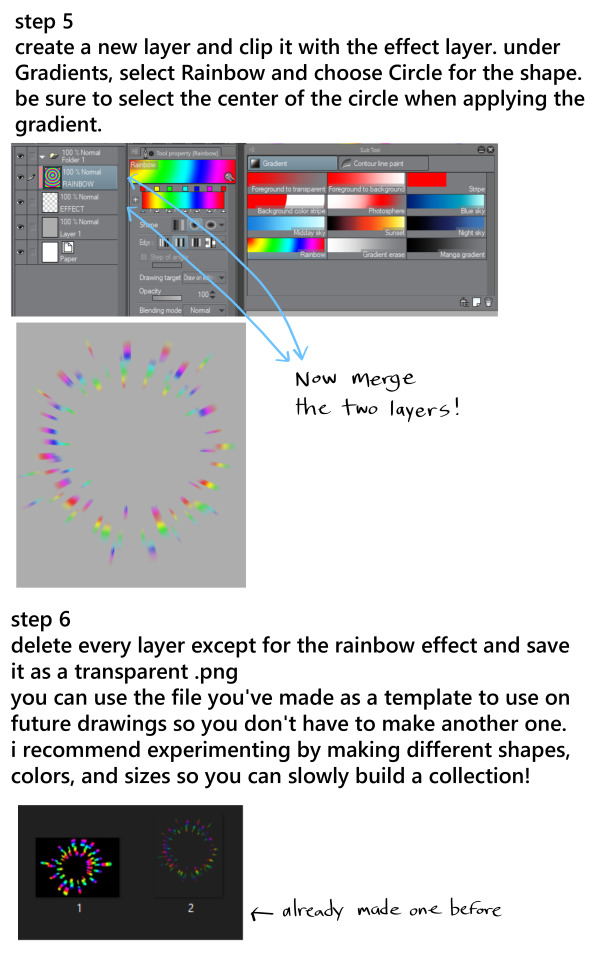
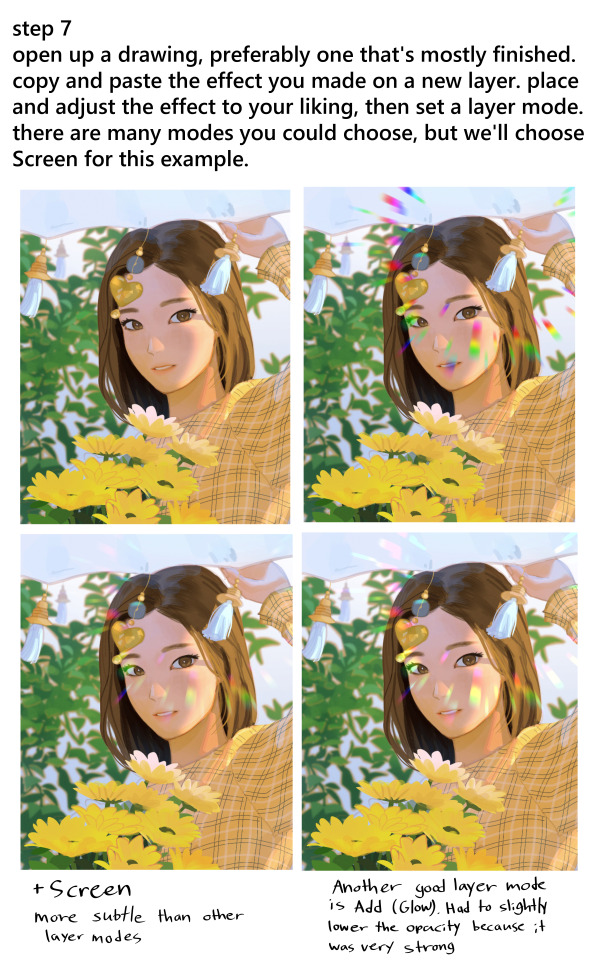
another art tutorial post :) this time it’s for rainbow effects

this is something I don’t see talked about often when it comes to drawing different body types. sure, weight distribution is a big one, but torso-to-leg ratio affects body types just as much!
For example, I have a longer torso, so high waisted pants rarely reach my belly button and pant legs are always wayyy too long. I’ve stood next to people that were shorter than me, but their crotch was a good 4 inches higher, just because their ratio was way different than mine.
something to keep in mind when designing characters!
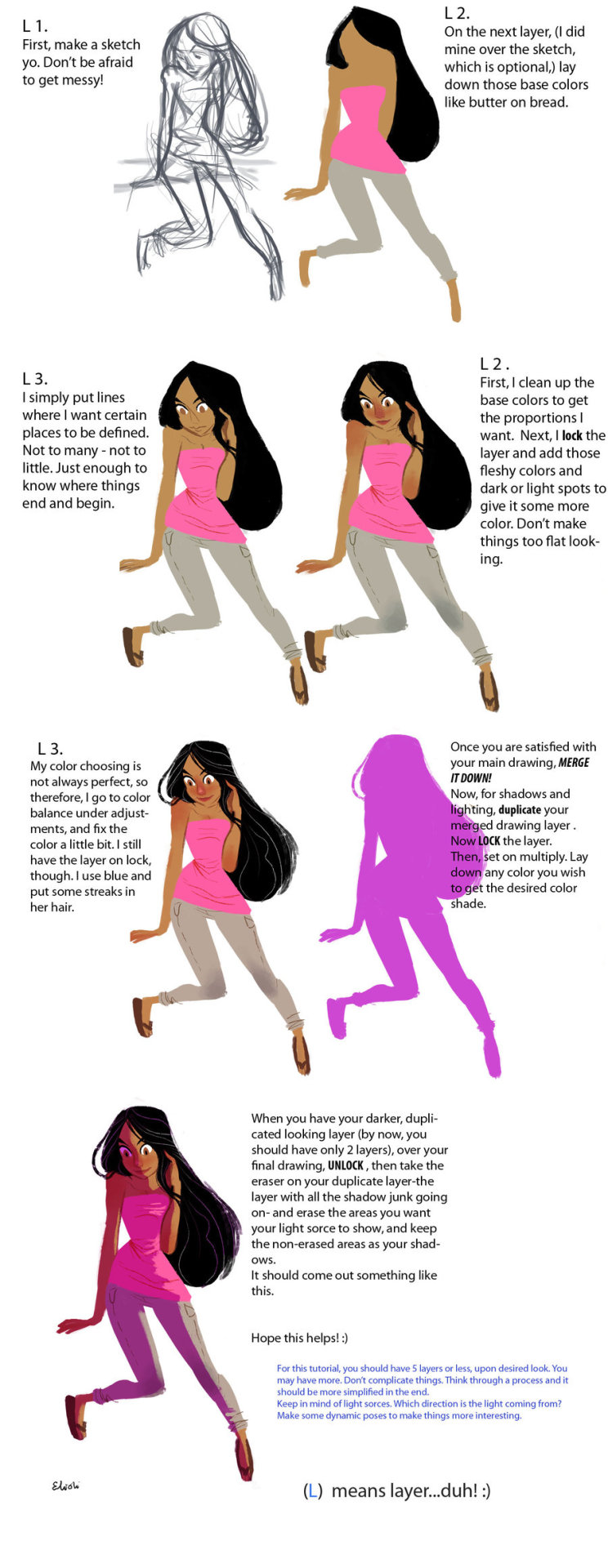
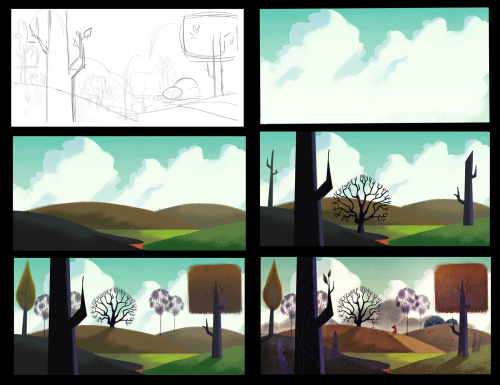



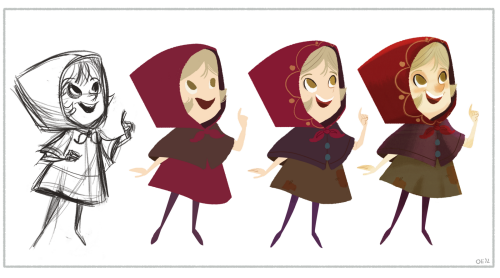
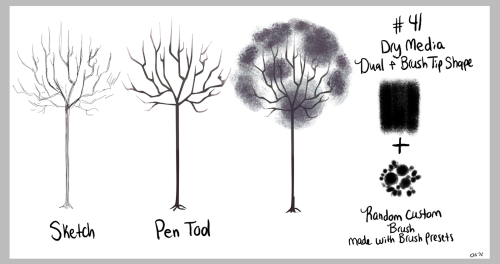


ELIOLI tutorials and processes
A Whole ‘Lotta Tutorials, Y'all.
We should mention that all of these were done in Photoshop CS3 and Paint Tool SAI!
This time, it’s all combined into one, if anyone were to reference these… if any at all!
Oh and sorry if you can’t read the first one too well (really old one), but you get the idea!
Quick art tip - child proportions
Ok this is a real quick one but let me show you how to get more-or-less accurate sizes for child characters. Kids are tricky to draw, they are - from toddler up to about teens people change radically almost every year so pinpointing character’s size during those years is pure hell.
What you need to do to make everything super easy for yourself is to check their Head Proportion. What makes kids look like - well, kids, is that their heads are proportionally large in comparison to their body.
Average adult is about 7,5 heads tall in comparison to their own body, however with children under 10 that number is just under 6 heads with about 1 head shorter the younger you go down to 3 heads as an infant.
Easiest way to figure the so-so head-height of a certain age is to find images of said age group and do a quick count on them

at which after you can replicate it in your own works - don’t mind if it’s not 1:1 with reference, finding images that are actually of the age you need is tricky and kids in general vary a lot so someone might be a lot taller than others. You have a bout 0,5 -1 heads of wiggle room before it starts to look way older.


Proportions are super important in art and i lovingly recommend everyone to figure out basics of them - it’s the easiest way to get notifically better with art. I could go on about proportions but let’s wrap this up. Need to note however that head proportion is not same as character height - a character can be 15 feet tall but still have head-height of 6, HH is simply a way to scale out the body.
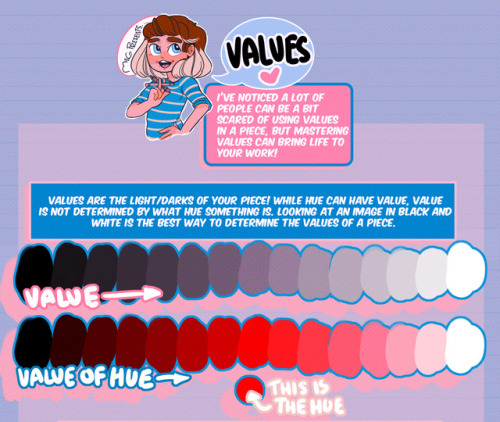
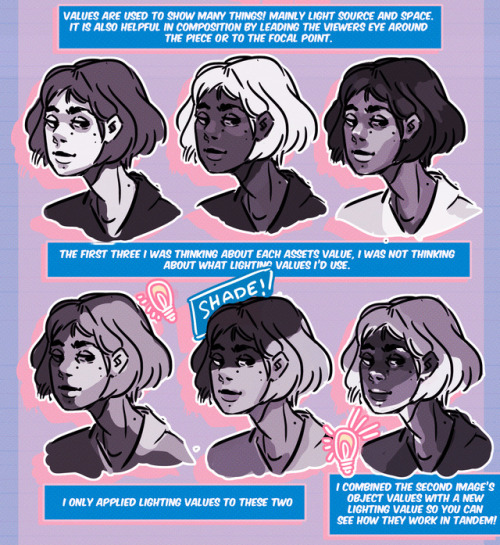
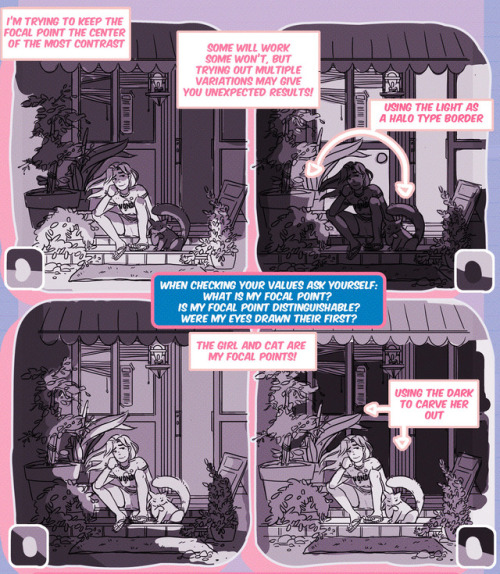
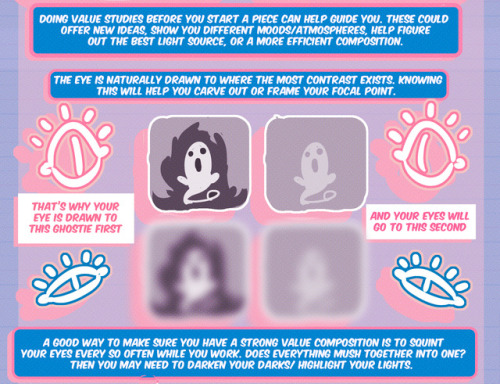
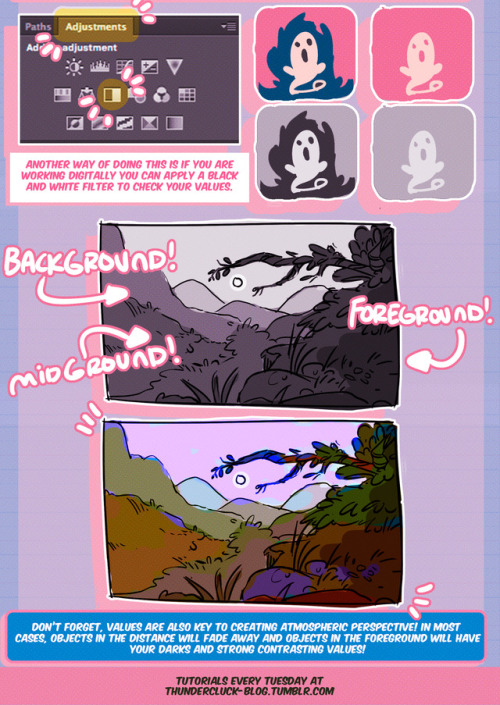
Hey friends, Meg here for WOOPS IT’S WEDNESDAY! Today we’re taking a look at how to study values and the importance of knowing how to use them! It’s not all about color, you know. If you have any tutorial recommendations send ‘em in here or my personal. Now go forth and I’ll see you next week!
